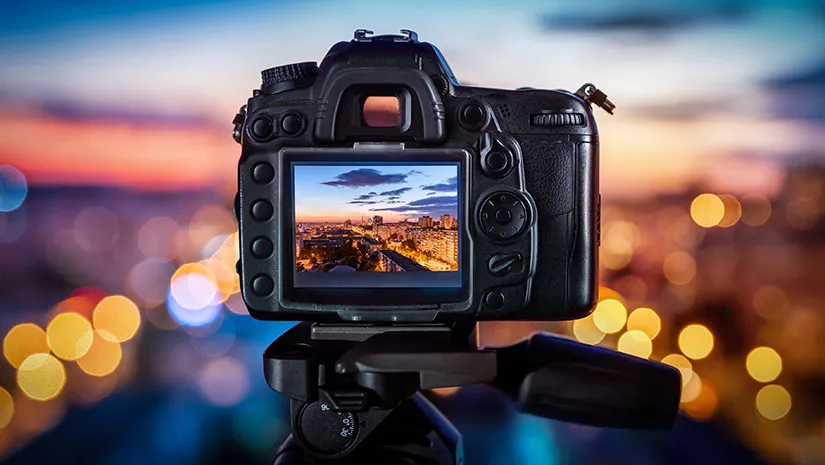Photography and Graphic Design in Brand Identity
When it comes to building a strong brand, there are many factors to consider. From the logo and color scheme to the messaging and overall aesthetic, every aspect plays a crucial role in shaping the brand’s identity. Two key elements that have a significant impact on brand identity are photography and graphic design. In this article, we will explore the importance of these two disciplines and how they contribute to creating a memorable and cohesive brand.
Photography is a powerful tool that can evoke emotions
Tell stories, and capture the essence of a brand. It allows businesses to showcase their products or services in a visually appealing way, making a lasting impression on their audience. High-quality photographs can convey professionalism, trustworthiness, and attention to detail, all of which are essential for building a strong brand identity.
When it comes to graphic design, it is the art of visual communication. It involves creating visually appealing designs that effectively convey the brand’s message and values. Graphic design elements such as logos, typography, and color schemes help establish brand recognition and differentiate a business from its competitors. A well-designed logo, for example, can become instantly recognizable and serve as a symbol of trust and reliability.
Graphic design plays a crucial role
In creating a cohesive brand identity across various platforms and mediums. Whether it’s designing a website, creating social media graphics, or developing marketing materials, consistent graphic design elements help reinforce the brand’s message and make it easily recognizable to consumers.

Photography and graphic design work hand in hand to create a cohesive brand identity. By combining visually stunning photographs with well-designed graphics, businesses can effectively communicate their brand’s story and values. For example, a clothing brand that uses high-quality product photography combined with minimalist graphic design elements can convey a sense of sophistication and elegance.
In conclusion
Photography and graphic design are essential components of brand identity. They help businesses create a visual representation of their brand, evoke emotions, and communicate their message effectively. By investing in professional photography and graphic design services, businesses can establish a strong brand identity that resonates with their target audience and sets them apart from their competitors.
Creating a visual identity
Is a crucial step in establishing a brand’s presence in the market. It involves carefully crafting visual elements that not only catch the audience’s attention but also effectively communicate the brand’s values and offerings. A well-designed visual identity can leave a lasting impression on the audience and differentiate the brand from its competitors.
Photography
Plays a vital role in creating a visual identity as it has the power to evoke emotions and tell stories. High-quality, professional photographs can capture the essence of a brand and showcase its products or services in a visually appealing way. Product photography, for example, is essential for showcasing the features and benefits of a product, while lifestyle imagery can help create a connection with the audience by depicting how the brand fits into their everyday lives. Behind-the-scenes shots can also provide a glimpse into the brand’s authenticity and give the audience a sense of trust and transparency.
Graphic design
On the other hand, is responsible for translating the brand’s personality and values into visual elements. This includes designing the logo, which serves as the face of the brand and is often the first thing that comes to mind when people think about the brand. The logo should be carefully designed to reflect the brand’s identity and resonate with the target audience. Fonts, layouts, and color schemes are also important considerations in graphic design, as they contribute to the overall look and feel of the brand’s visual identity. Consistency is key in graphic design, as it helps to reinforce the brand’s identity and make it easily recognizable to the audience.
By combining photography and graphic design, brands can create a cohesive visual identity that effectively communicates their values, personality, and offerings. This visual identity serves as a visual representation of the brand and helps to establish a strong and memorable presence in the market. It not only attracts the attention of the audience but also creates a connection and builds trust, ultimately leading to brand loyalty and increased sales.
The Multifaceted Role of Graphic Design in Brand Recognition
In addition to logos and photography, graphic design plays a significant role in establishing brand recognition. Graphic designers use their expertise to create visually appealing marketing materials that align with the brand’s identity and values. This includes designing brochures, flyers, business cards, and other promotional materials that showcase the brand’s message and offerings.
Moreover, graphic design is essential for creating a consistent visual identity across different platforms. Whether it’s the brand’s website, social media profiles, or packaging design, graphic designers ensure that the brand’s visual elements are consistently applied. This consistency helps consumers easily recognize the brand and distinguish it from competitors.
3. Conveying Brand Values and Storytelling
Every brand has its unique story and values that set it apart from the competition. Photography and graphic design play a crucial role in conveying these brand values and telling a compelling story.
Through carefully selected images, photography can capture the brand’s values and showcase its products or services in action. For example, a sustainable clothing brand may use photographs that highlight eco-friendly materials or ethical manufacturing processes. These images not only convey the brand’s values but also resonate with consumers who share the same values.
Graphic design
On the other hand, helps to tell the brand’s story through visual elements. Whether it’s through infographics, illustrations, or typography, graphic designers can create visuals that communicate the brand’s message effectively. By using design elements strategically, brands can engage their audience and leave a lasting impression.
Furthermore, photography and graphic design can work together to create a cohesive brand identity. The use of consistent visual elements, such as color schemes, fonts, and imagery, can help reinforce the brand’s values and create a recognizable brand identity. This consistency across different marketing materials, such as websites, social media posts, and advertisements, helps to build brand recognition and trust among consumers.
Additionally, photography and graphic design can also be used to evoke emotions and create a connection with the audience. By capturing candid moments or using impactful visuals, brands can elicit specific emotions in their audience, whether it’s excitement, nostalgia, or empathy. These emotional connections can strengthen the bond between the brand and its customers, leading to increased brand loyalty and advocacy.
Conclusion
Photography and graphic design are powerful tools for conveying brand values and storytelling. Through carefully selected images and strategic design elements, brands can effectively communicate their message, engage their audience, and create a strong brand identity. By leveraging the power of visuals, brands can differentiate themselves from the competition and build lasting relationships with their customers.
4. Differentiating from Competitors
In today’s competitive market, it’s essential for brands to stand out from the crowd. Photography and graphic design can help create a unique and memorable brand identity that sets a brand apart from its competitors.
Photography
Allows brands to showcase their products or services in a way that highlights their unique features or benefits. By capturing attention-grabbing images, brands can differentiate themselves from competitors and create a sense of desirability among consumers.
For example, a clothing brand can use high-quality photography to showcase the intricate details of their garments, such as the stitching or fabric texture. By highlighting these unique features, the brand can position itself as a premium option, setting it apart from competitors who may offer similar styles.
Similarly, a travel company can use stunning landscape photography to showcase the destinations they offer. By capturing the beauty and uniqueness of each location, the brand can create a sense of wanderlust and adventure, enticing consumers to choose their services over competitors who may offer similar travel packages.
Crafting Visual Differentiation Through Graphic Design
Graphic design, on the other hand, helps to create a distinct visual style that is instantly recognizable. By using unique color schemes, typography, and design elements, brands can create a visual language that sets them apart. This visual differentiation helps consumers remember the brand and choose it over competitors.
For instance, a tech company can use bold and futuristic graphic design elements to convey a sense of innovation and cutting-edge technology. By incorporating sleek lines, metallic accents, and vibrant colors into their branding materials, the company can position itself as a leader in the industry, differentiating itself from competitors who may have a more traditional or outdated visual style.
Additionally, graphic design can be used to create a cohesive and consistent brand identity across various touchpoints. From the company’s logo and website to their social media graphics and packaging, a well-executed graphic design strategy ensures that every interaction with the brand is visually cohesive and memorable.
Building Trust and Credibility Through Visual Branding
For example, a clothing brand may use photography to showcase real people wearing their clothes in everyday situations. By doing so, they are able to communicate the brand’s values of inclusivity and diversity, making the audience feel like they are a part of the brand’s story. This storytelling approach not only evokes emotions but also builds trust by showing that the brand understands and represents its target audience.
In addition to storytelling, photography and graphic design can also help to establish credibility and trustworthiness. When a brand invests in high-quality visuals, it shows that they care about their brand image and are willing to go the extra mile to deliver a visually appealing experience to their audience. This attention to detail and commitment to quality can instill confidence in the audience, making them more likely to trust the brand and its products or services.
Conclusion
In conclusion, photography and graphic design are powerful tools for evoking emotions and building trust with the audience. By capturing authentic moments, telling compelling stories, and creating visually appealing experiences, brands can establish a deep connection with their audience, enhance their credibility, and foster long-term loyalty.




